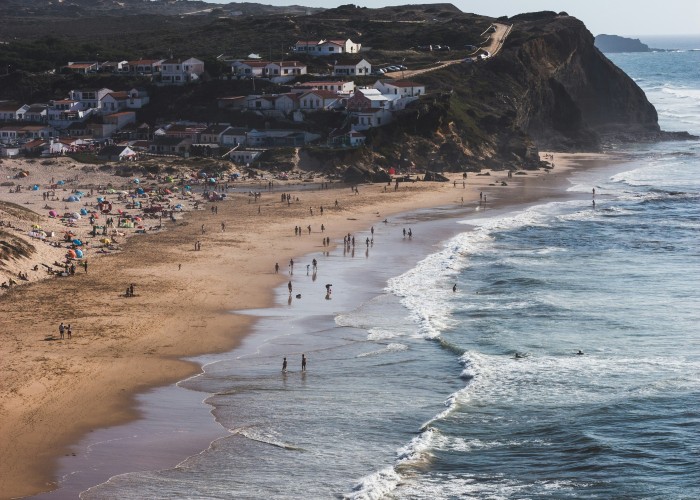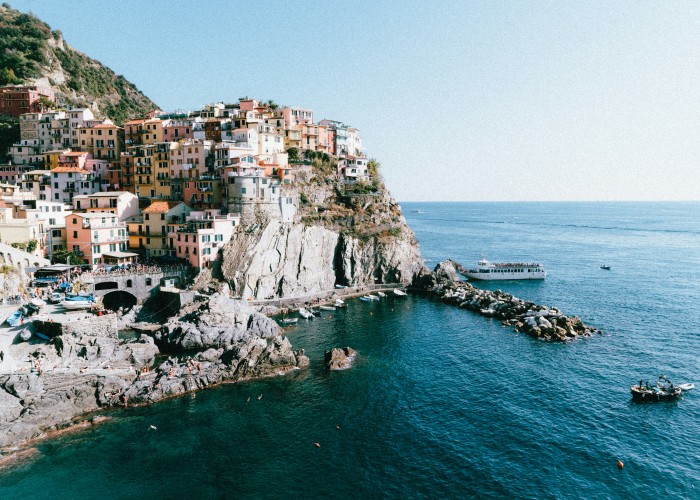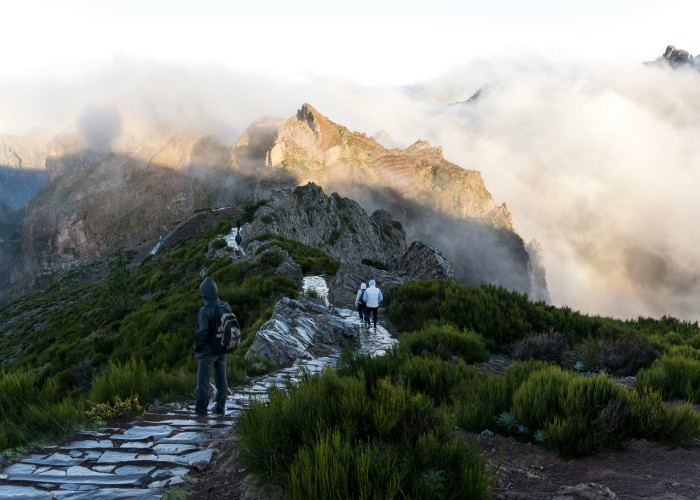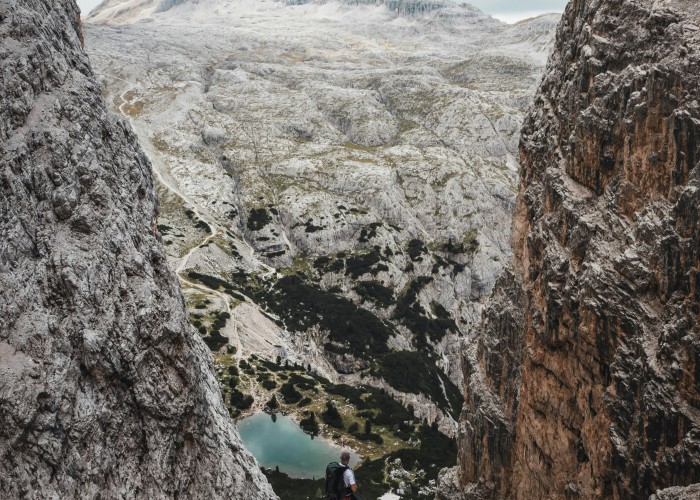The Camino del Norte is a historic pilgrimage route that traces Spain’s northern coastline, stretching from the Basque Country into Galicia. This scenic trail follows sea cliffs, beaches, and quaint villages. Hikers from the USA, UK, Australia, and Germany appreciate its mix of cultural heritage, fresh ocean air, and fewer crowds compared to its southern sibling, the Camino Francés. You’ll walk through fishing harbours, green hills, and seaside towns, all while following yellow scallop shell markers that guide your journey to Santiago de Compostela. Camino del Norte Trek – Spain.
Best Time to Visit
Choose your timing wisely for the best experience:
- Late spring (May to June) offers mild weather, blooming landscapes, and moderate foot traffic.
- Summer (July and August) brings warmth, long daylight, and vibrant coastal villages—but can feel crowded and hot inland.
- September is ideal—gentle sunlight, quieter paths, and cooler temperatures.
- October brings crisp air and autumn colors, but some accommodation may close and days grow shorter.
How to Reach (Train / Road / Air)
Here’s how to get started on the Camino del Norte:
- By air: Major international airports in Bilbao, San Sebastián, Oviedo, and Santander offer access.
- By train or bus: Spain’s rail and bus networks connect these cities well, including regional transit stations that sit close to trailheads.
- By road: Renting a car gives you flexibility to reach villages like Irún, Deba, or Bilbao to start your trek, as well as shuttle to lodging options.
- Once on the trail, local buses and taxi services can help with transfers if you plan shorter pilgrimage stages.
Entry Fees and Permits (Approximate or Subject to Change)
- No entry fees are required to walk the Camino del Norte—public paths are accessible to all.
- Pilgrim passport (credencial) is not mandatory but recommended; you can obtain it from pilgrims’ associations or churches.
- Accommodation fees: Expect to pay 20 to 35 euros per night in pilgrim hostels (“albergues”) or private rooms—rates vary, subject to change.
- Optional donations: Some hostels request small donations to support upkeep.
Food Availability and Meal Options During the Tour
Meals are well supported along the route:
- Villages and towns dot the path frequently—cafes, bakeries, and small supermarkets make resupplying easy.
- Pilgrim-friendly menus featuring hearty dishes—like fish stews, vegetable soups, or traditional rice plates—are common around lunchtime.
- Supermarkets and local bakeries allow for packed lunch prep in more remote stretches.
- Water: Tap water is safe in most towns, but carry a refillable bottle along each day.
Packing List and Essentials
Walk light, think smart, and pack for varied coastal weather:
- Lightweight hiking boots or sturdy trail shoes
- Quick-dry, breathable clothing and layered pieces
- Waterproof jacket and lightweight rain pants
- Hat, sunglasses, and sunscreen for sun protection
- Daypack (25–30 L) with rain cover
- Reusable water bottle or hydration bladder
- Snacks, energy bars, and backup food
- Trekking poles for rocky or steep segments
- Compact sleeping bag liner (common in bunk-style pilgrim hostels)
- First-aid essentials including blister treatment
- Portable phone charger and a power adapter if needed
- Pilgrim passport and a small journal or map
Safety Tips and Local Regulations
- Follow markers: Look out for yellow scallop shell icons; they guide you along the coastline and inland sections.
- Stay aware of terrain: While coastal sections tend to be flatter, you will encounter rocky cliffs, uneven cobblestones, and occasional steep paths.
- Weather changes quickly: Coastal fog and afternoon rain are common—carry layers and rain protection.
- Wild camping: Generally not permitted near villages; instead, plan nightly lodging. Camino del Norte Trek – Spain.
- Emergency number: Call 112 if needed in Spain.
- Leave no trace: Respect local ecosystems and tidy your overnight sleeping areas.
Tips for Beginners or First‑Time Visitors
- Start with shorter stages—8 to 15 kilometres—to find your rhythm.
- Booking albergues in advance can give peace of mind, especially in summer.
- Listen to your body: take rest days when needed—and enjoy ocean vistas along your pace.
- Try local delicacies—fresh seafood, cider, cheeses—though be mindful of dietary needs.
- Walk with others at times—pilgrims often exchange stories and company enhances the experience.
Local Customs or Cultural Etiquette
- A simple greeting of “Buenos días” or “Buen Camino” (good journey) brightens every interaction.
- Respect quiet times in albergues—lights out and hushed voices are common after evening.
- Tipping: Not essential—but small gestures to hostel keepers or café servers are appreciated.
- Environmental respect: Keep beaches, forests, and villages clean of litter.
- Join village life when local events or markets are happening—they welcome curious visitors. Camino del Norte Trek – Spain.
FAQ Section
How long is the Camino del Norte?
The full route covers approximately 820 kilometres from Irún to Santiago, though many walk shorter coastal sections.
How difficult is it?
Rated moderate—coastal segments offer manageable distances and terrain, but hills and uneven surfaces require good stamina.
What elevation changes can trekkers expect?
Expect short climbs along coastal cliffs and mild inland ascents, with daily elevation gains around 300 to 500 metres in some sections.
Are restrooms and drinking water readily available?
Yes—frequent stops include public restrooms and fountains, especially in towns and villages.
Can beginners or first-time pilgrims manage it?
Yes—many newcomers walk some or all of it successfully. Consistent preparation and pacing are key.
Is the trail well marked?
Yes—look for scallop shell signs and painted arrows throughout the Camino del Norte.
Do I need to carry a sleeping bag?
Bring a liner or lightweight sleeping bag if staying in albergues with shared bunk beds; private lodgings provide bedding.
Is mobile phone reception reliable?
Mostly yes in towns; remote coastal stretches may vary. Download offline maps before setting out.
Is wild camping allowed?
Not typically in populated areas. Most walkers stick to albergues, pensions, or hostels for safety and comfort.
Final Thoughts
Walking the Camino del Norte is a remarkable way to explore Spain’s northern coast—from peaceful beaches to rugged cliffs and small seaside towns rich in history. Whether you’re starting from the USA, UK, Australia, Germany, or elsewhere, this coastal pilgrimage delivers culture, scenery, and a sense of achievement. Camino del Norte Trek – Spain.





Leave a Reply